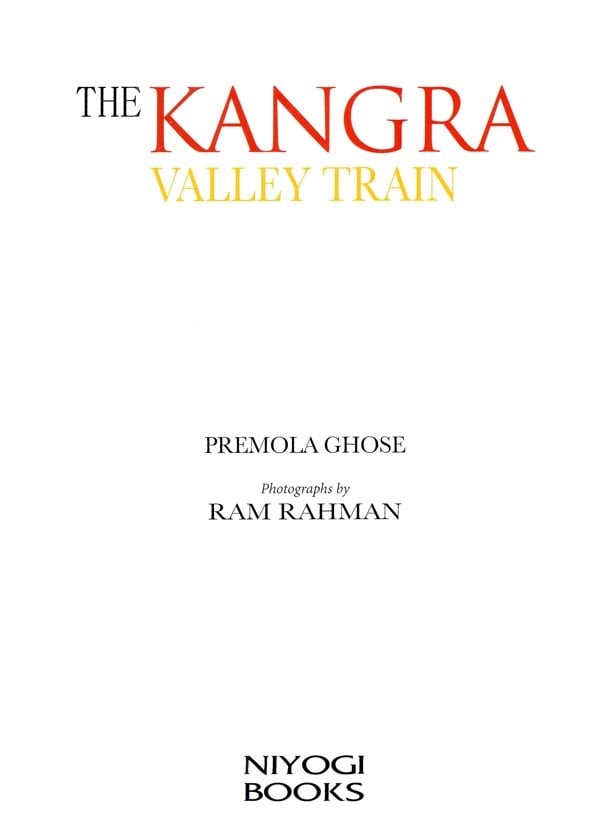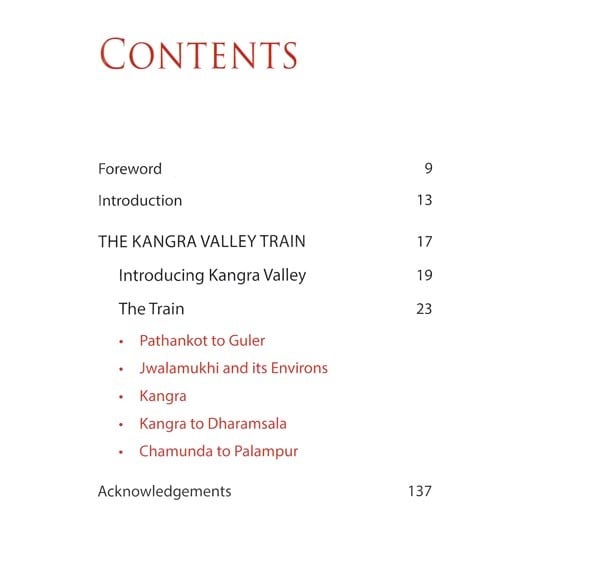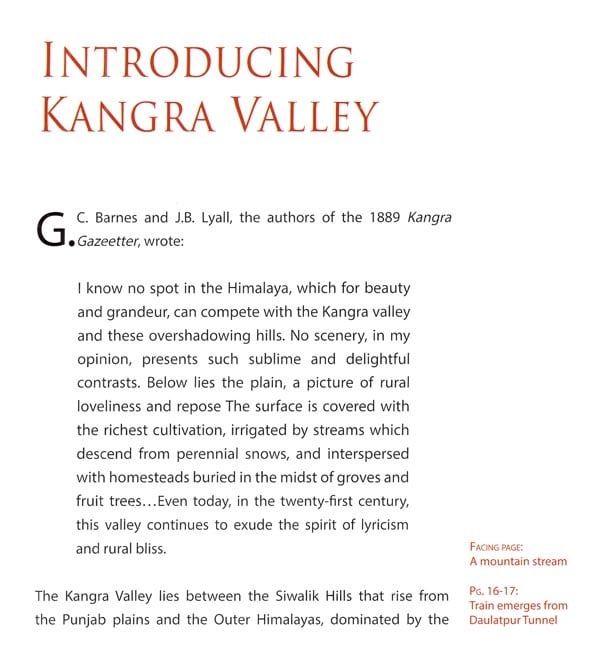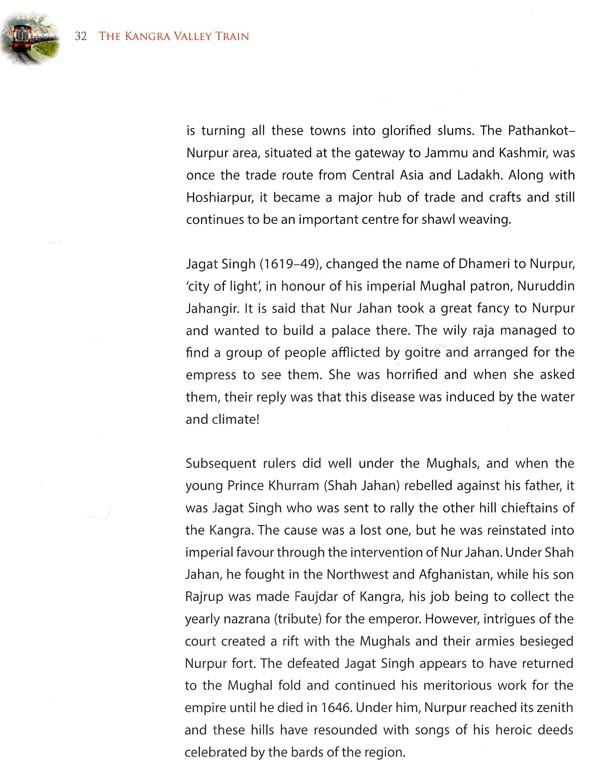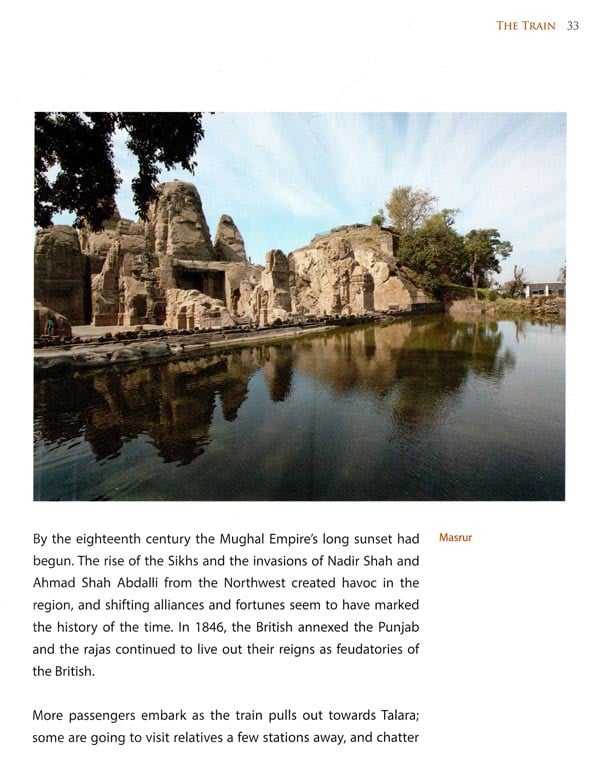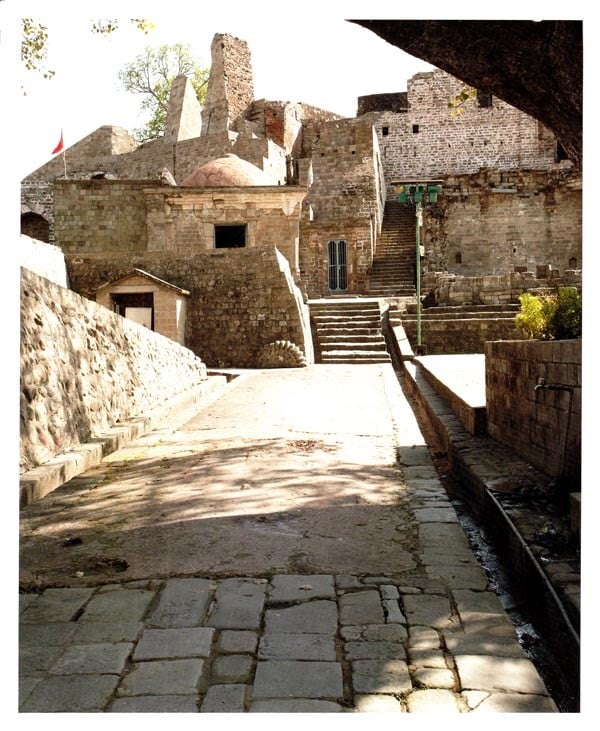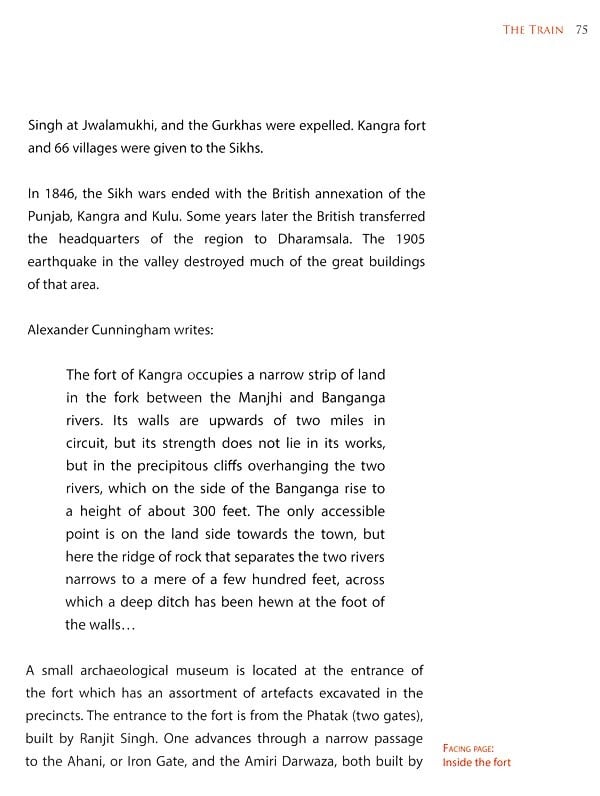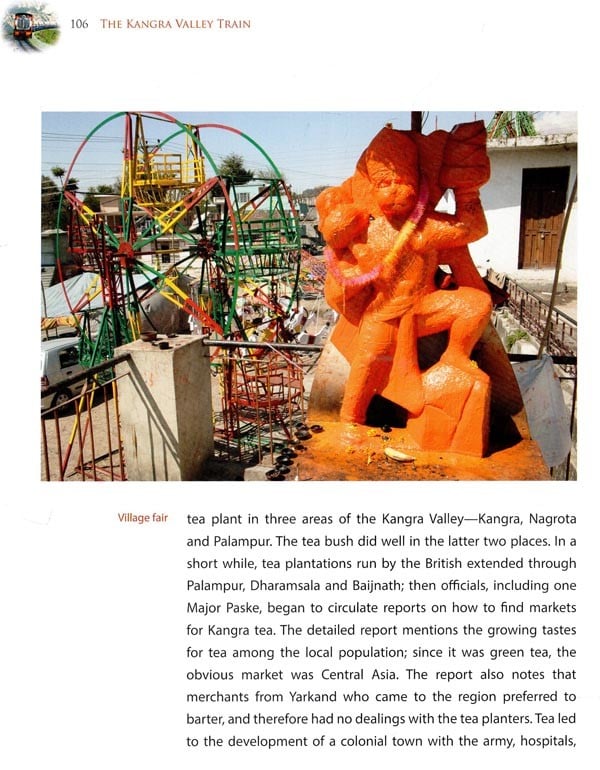About the Book The Kangra Valley Rail is a wonderful way to explore the rustic charms of Kangra in Himachal Pradesh. The journey from Pathankot to Joginder Nagar takes almost 8 hours, following the line of the snow-clad Dhauladhars through landscapes that move from the sub-tropical to the alpine, through time and history. The book is a travelogue/guide that introduces the reader to the variety one encounters from the pilgrimage sites, the forts and ruined palaces of kings immortalised by the local boards and roiniature painters, people, local architecture, cuisine and the story of Himalayan tea, and the exiled world of Tibet.
About the Author Premola Ghose is an artist and illustrator In 1998, two books written and illustrated by her were published: Gang Tales from Ranthambhor and The Bodhisattva and the Gang. Recently she has written and illustrated Tales of Historic Delhi (2011), The Magical Ride of Juley the Camel (2011) and Zero Goes to Goa (2014).
She is currently Chief, Programme Division, at the India International Centre, New Delhi. In 2001 she was decorated Dame in the civil merit honors list of the King of Spain.
Foreword There are great travelogues that come mind, including the books Patrick Leigh-Fermor, Paul and Bruce Chatwin. These are serious travel writings but, honest, can make heavy going. They describe journeys, places, people, but certainly not reading. If try describe these works in terms of metaphor, then each undertaking degree of advanced planning. me, such planning comes close to campaign one can think There occasions on which picnic, not expedition, because the fun, light-heartedness, and the frothiness.
Premola Ghose's book, The Kangra Valley is picnic, but finds that it also journey of exploration.
splendour, a gentle landscape rising to a dramatic mountain range, the art form of the Kangra school of miniature painting. a whole settlement of artists, and the religious revival of a group of refugees ousted from Tibet to their sanctuary in India, all come to life. This is a remarkable achievement for a book so slim.
In India, railway travel has always been a romance in three dimensions. The first is that of the broad gauge railway system, all fast movement, masses of people and thundering freight trains that are the lifelines of commerce. The second is the world of the metre gauge railway, which has been beautifully depicted by Bill Aitken. But the third is a magic fairyland of our Narrow Gauge Light Railways, of which the two best-known examples are Kalka Shimla and the train to Darjeeling. In this book, Premola Ghose has brought alive the Kangra Valley Railway (KVR), much used even today. It is a workhorse that passes through some of the most beautiful mountain scenery in the world. This railway is the spine or (or along which) Premola Ghose has travelled, and she ht alive the Kangra Valley.
Introduction Kangra has been my frequent destination in the last four mainly because Deepark Institute in Bir Teachings by monk-scholars in the rich philosophy of Euddhism (Tibetan and other schools) made each journey to the valley an enriching experience. The charming vistas this gentle valley introduced to the jaded eyes of the urban dweller inspired one to look for land, and to eventually spend the rest of one's days living in and around Bir. The pursuit was indeed crazy as we hurtled down the country lanes looking for that elusive dream. There were always land, courteous farmers keen to sell to us, and tricky negotiators. Pledges were made, and visits to patwaris and tehsildars were done with tiresome frequency; but when D-day dawned, insurmountable problems arose. For one, the law of the state does not allow outsiders to buy land, for which there was the 100-year lease, and if that was acceptable, there was consent to be gained from a large amount of relatives.
**Contents and Sample Pages**
